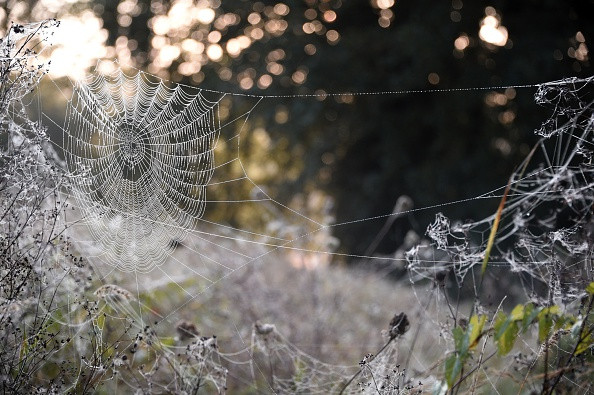Scientists use lasers to bend, melt, and weld spider silk
Bonds created by the 'welds' are reportedly similar in strength to the silk itself.

Scientists from India have devised a way to use lasers to melt and weld spider silk to itself as well as to a number of other materials, including Kevlar.
Spider silk is reportedly one of the strongest natural fibres and its uses as an all natural, environmentally friendly substance are potentially far reaching. According to a paper published in researchgate, the material can be used in medicine, surgery, and even drug delivery. Procurement and farming of spider silk is not feasible on an industrial scale, mostly owing to the cannibalistic nature of spiders.
The team from Indian Institute of Science Education and Research, Mohali, was able to amplify a laser beam's power when passed through spider silk and was able to use it cut the silk in certain places or bulge and melt the silk to an extent where it can be bent or even welded on to surfaces.
The effect that made this manipulation of silk possible is called, according to a report by ARS technica, "nonlinear multiphoton interactions." It works when two photons of a given energy level are able to combine into one of double the energy within certain materials. It was found that when a specific type of light is passed through spider silk, it amplifies into a high energy state, which is absorbed by the fibres, allowing it to melt and be welded.
Researchers directed short pulses of a femtosecond laser to certain parts of spider silk. By doing this, they were reportedly able to keep the energy expansion within the silk localised instead of letting it diffuse.
During the initial phases of testing, it was found that different wavelengths of lasers were either doubling, tripling, or quadrupling the energy of incoming photons, and that at certain power levels, there was no effect to the silk, but at higher power levels, about 80 GigaWatts per square centimeter, the silk simply got cut, ars technica reports.
By fine tuning wavelength and power levels, the team was reportedly able to precisely bend the silk to form spring, solenoids, and complicated knots.
When placed against other materials, the melting silk was able to weld on to them. Surfaces such as glass, metal, and Kevlar bonded to spider silk with a strength that is equivalent to the silk itself, it was reported. The team was reportedly even able to suspend a small mirror from a frame with only silk through laser welds.
The study was published in the journal Nature.com.
© Copyright IBTimes 2025. All rights reserved.





















